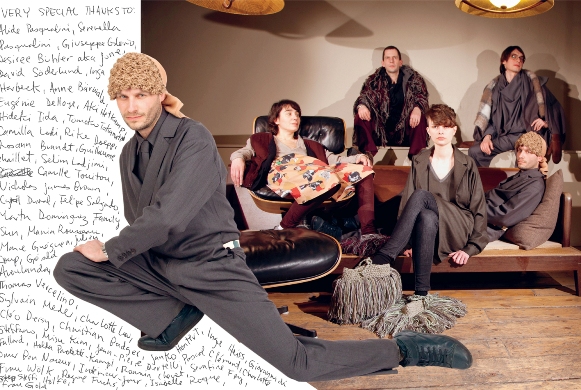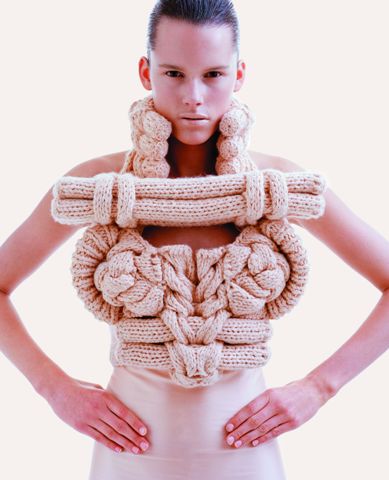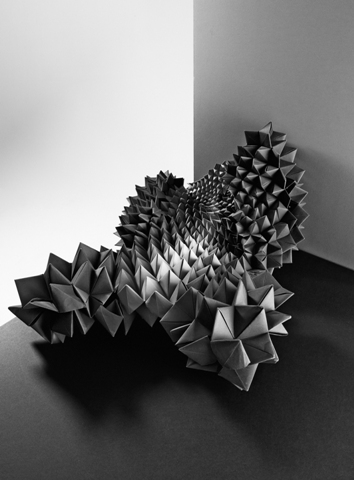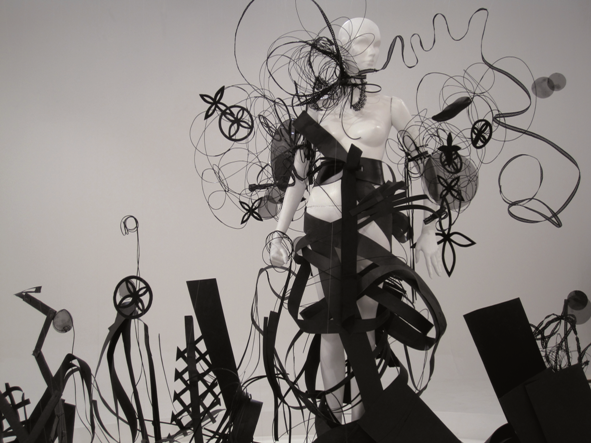High fashion, extra-ordinary in both its character and presentation, comes to Tel Aviv with the opening of Bless, Boudicca, Sandra Buckland – Fashioning the Object, an exhibition that originated at the Art Institute of Chicago where it was organized by Zoë Ryan, its curator of architecture and design.
Unlike many fashion houses, these three design studios cater for everyday folk who want their clothes and accessories to blend in with their lives. Setting aside the traditions of the fashion industry, these designers are explorers, constantly evolving concepts and innovations that are peppered with humor and irony. On exhibit, drawn from their recent collections, are garments, accessories, objects, photos and films that illustrate this commonality, as well as emphasizing their individual approaches.

Three separate environments showcase their work. Bless, founded in 1997 by Austrian designer Desiree Heiss and German designer Ines Kaag elected to hang chain-mail curtains around their space, music provided by wind-chimes. This curtain is a fun introduction, as well as providing support for a number of Bless’ uni-sex garments, like a striped sweat shirt, boxing gloves and slippers made of colored cord. Further illustrating this firm’s laid-back approach are photos from Know Howowow, Bless’ 2011 -2012 collection, in which members of its staff acted as models.
Bless has decorated the walls of one space – intended perhaps as an idyllic living room –with large color photos that combine views of tranquil domestic interiors with landscapes of the French Riviera; this seems to be an attempt to create the kind of relaxed atmosphere in which Heiss and Kaag would want people to see, think about, and buy their clothes. Also located here, are examples of their look books – illustrated catalogues detailing every design in a collection. Every fashion house produces them, but Bless prefers to include theirs within the pages of magazines; collaboration aimed at expanding their own horizons as well as those of other people.
.

The environment created for Swedish designer Sandra Backlund, whose one-person studio opened in 2004, focuses without any distractions on her fabulous three-dimensional knitwear. Each item, displayed on a bust set on a metal stand, has been individually crafted and is equally striking; whether one looks, for example, at a ribbed and rolled dress hand-knitted from alpaca, a floating silk Plissé dress, or a spiky Origami top from Ink Blot Test, Backlund’s 2007 collection. On the wall above, are superb, close-up photographs of this knitwear, the work of Swedish still-life photographer Ola Bergengren (see below). The effects he achieves (see below),in some instances laying the knitwear flat before photographing from above, emphasize the sculptural and tactile qualities in Backlund’s designs as well indicating that Nature may be a source of inspiration.
.

A darkened gallery illuminated by spot lighting is the setting for the work of the London based duo Zowie Broach and Brian Kirkby whose design studio was established in 1997 under the name Boudicca. The reference is to Queen Boudicca (Boadicea), an ancient Briton, who led an uprising against Roman troops. Legend has it that she and her female warriors went into battle naked with their skin covered only with blue wode, a natural dye. This brilliant color has clearly entered Boudicca’s fashion vocabulary, as noted, not only by the Blue Mannequin on display here, but by a unique perfume, given the name Wode, created by Broach and Kirby. Packaged in a paint spray can you can buy it online, but it is also on view in the gallery, albeit under glass. Its special feature lies in the fact that when first sprayed onto the skin it looks like blue paint, but when rubbed, disappears, leaving only the fragrance behind.

While there are several plastic mannequins on display, one in a cat suit wearing a bee sting hat, another, a lace mask, the true character of Boudicca’s work is conveyed on this occasion by means of films. One of them, Tornado Dress (2009) following the gradual layering of materials and ribbons over a white figure, is an effective demonstration of how Broach and Kirby build up their designs on a tailor’s dummy. Other films illustrate the very diverse sources on which they draw: Elizabethan period costumes, for example, paintings by English artist Francis Bacon and the rock music of David Bowie. One film, at least, depicts Boudicca’s bleak-looking models presenting an austere collection of clothes that included knee high boots with metal shields and belted sheepskin coats. Like the other two design houses featured in this show, this studio is clearly at the forefront of a drive to take fashion design out of its elitist cubicle into the world of art, architecture, music and history.
This exhibition, open until April 27, 2013,originated at the Art Institute of Chicago where it was organized there by Zoë Ryan, its curator of architecture and design. Curator in charge at Tel Aviv Museum was Meira Yagid-Haimovici.
Herta and Paul Amir Building,27 Shaul Hemelech Blvd., Tel Aviv.






[…] is featured in the exhibition Fashioning the Body, read more about it in Angela Levine’s Pushing Out the Boundaries of Fashion; John Stezaker opening on January 18th; and a major solo exhibition of Douglas Gordon opening on […]
Comments are closed.